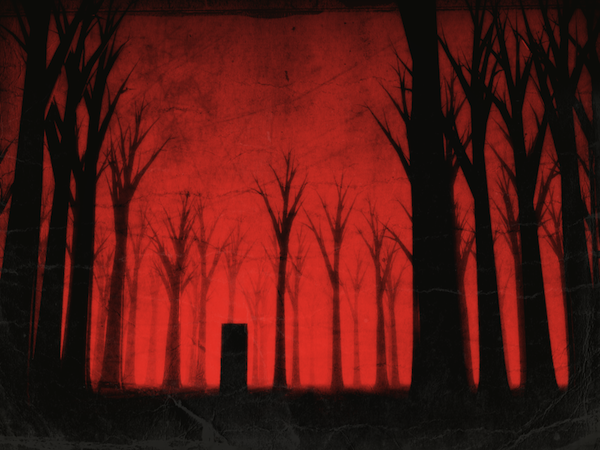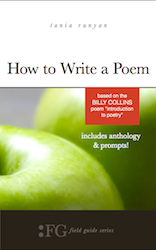
As I survey the ever-growing violence of Halloween displays in my neighborhood, I wonder if we’ve begun to replace fear and mystery with plain old boring gore.
Bodies hanging from trees, intestines spilling from graves, and all manner of dismembered, bloody zombies: where’s the imagination?
Luckily, I have some tips (tricks?) for writing a Halloween poem that will send shivers down the spine–because your words will be that chillingly fresh. Let’s use the power of poetry to recapture the meaning of “spooky.”
There are plenty of Halloweenish poems out there beyond Poe’s classic The Raven. One of my new favorites is “Theme in Yellow” by Carl Sandburg.
Theme in Yellow
I spot the hills
With yellow balls in autumn.
I light the prairie cornfields
Orange and tawny gold clusters
And I am called pumpkins.
On the last of October
When dusk is fallen
Children join hands
And circle round me
Singing ghost songs
And love to the harvest moon;
I am a jack-o’-lantern
With terrible teeth
And the children know
I am fooling.
—Carl Sandburg
Read the poem aloud several times and see what you notice. How do the images, colors, sounds and lines make you feel the way you do? (For more details about exploring poems, check out How to Read a Poem, which digs deeply into those messy, tasty poetic innards.)
One site describes this Sandburg poem as “harmless” and “cute.” Oh, I beg to differ.
No matter how many times I read this poem, the last four lines strike me as creepy. Perhaps the enjambment and lack of comma before “And,” turning this clause into a run-on, is just enough to add a breathlessness that makes me not so sure the children are completely fooled as they chant beneath that full moon.
How do you read “Theme in Yellow?” And how can this poem inspire you to write your own?
1) Make one person or object your star
You don’t need to replicate an entire graveyard cast of characters to write a scary poem. Sandburg focuses on a pumpkin. Paisley Rekdal, in her stunning poem Bats, focuses, well, on bats (though the poem, like most good poems, is about so much more). By zeroing in on one subject, you are more likely to write about it in detail and make it come alive.
Need some ideas?
• Cats. But maybe a white one.
• A piece of candy left in the street
• Something hidden under a pile of leaves
• A costume malfunction
• An egg-smeared window
• The cousin of Frankenstein
• A runaway mummy
• Those plastic spider rings everyone hates
2) Wake the senses
Halloween is all about laying your eyes on scary sights, hearing the howl of wind, getting goosebumps, and tasting candy corn. Notice how Sandburg not only describes the visions and colors of the scene but implies feeling and sound by touching the air with the chill of dusk and ghostly songs. Take a moment to freewrite about your subject first, exploring every sense that comes to mind. Sometimes you may need to use similes, metaphors, or personification to see your subject in a different light–or darkness.
3) Don’t say it all
What makes most poems and stories spooky is knowing when to stop. If you don’t use any sensory language, of course, you won’t grab your reader in the first place. But if you overkill, so to speak, telling them exactly what to experience to the very end, well, that’s the suburban lawn covered with plastic corpses. (For more on the tingly subject of Mystery, see the book How to Write a Poem).
Sandburg leaves us wondering about the pumpkin’s “fooling.” What mystery can you leave in your poem?
4) Make it a treat
Why keep your poem to yourself this Halloween? Post online for friends to read or even give one away on the spooky night itself. Just make sure you attach it to a piece of candy first, or you will wake up to the scariest Halloween sight ever: toilet paper hanging in your front yard’s skeletal trees.
Photo by Andrew Mason, Creative Commons, via Flickr.

